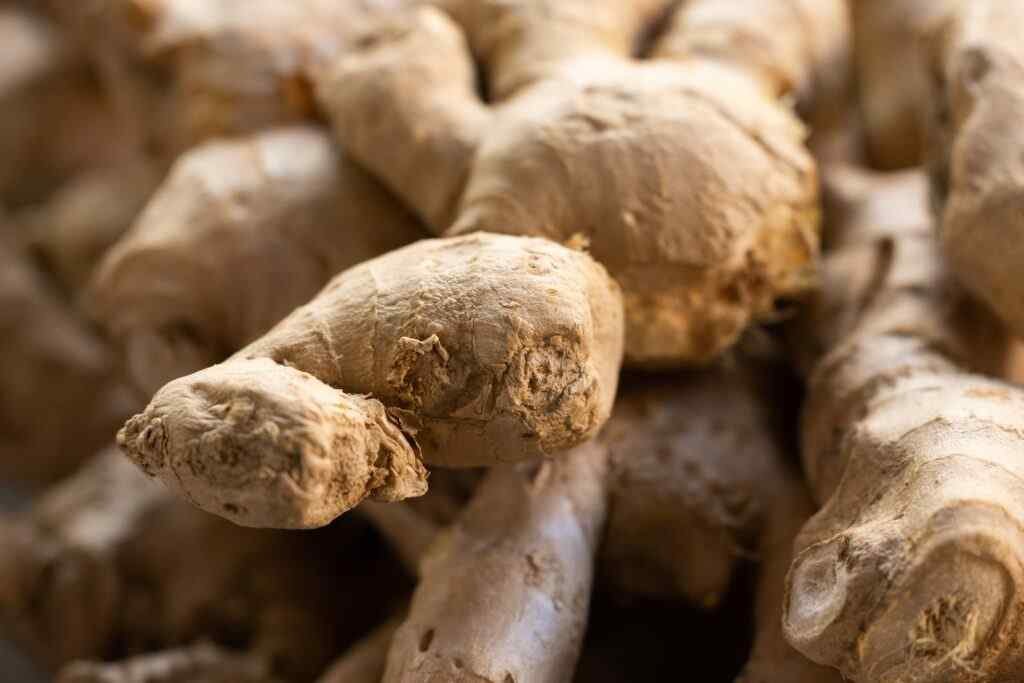Ginger, a root celebrated for its zesty flavor and health benefits, sometimes faces the unfortunate fate of going bad. Recognizing the signs of spoilage is not just about saving a few bucks, but also about preserving the quality of your culinary creations. With a keen eye and a bit of knowledge, you can easily determine when your ginger has past its prime.
To know if ginger is bad, look for mold, a mushy texture, or an off-putting smell. Fresh ginger should have a firm texture, a spicy aroma, and a smooth skin with a slight sheen. Any deviation from these characteristics means the ginger is no longer good to use. This simple guideline ensures you use only the best ginger for your dishes, keeping flavors vibrant and your meals delicious.
Now, I’ve got a bit more to share that’ll help ensure your ginger stays fresher, longer. And trust me, it’s worth knowing to make every dish you prepare with ginger stand out.
1. Mold or Discoloration

To determine if ginger has spoiled, closely inspect it for any signs of mold, such as white, gray, or blue-green fuzziness, or if it exhibits dark spots or discoloration, indicating deterioration. This initial examination is important in evaluating the freshness of ginger.
Mold on ginger manifests as fuzzy patches, varying in color from white to gray or blue-green. These are microbial colonies that have begun to grow, consuming the ginger’s organic matter.
The presence of mold not only affects the ginger’s aesthetic and taste but also poses potential health risks if ingested.
Furthermore, discoloration in ginger, such as dark spots, signals the beginning of the decomposition process.
This may be attributed to enzymatic browning, a chemical reaction that occurs when the ginger is exposed to air, leading to oxidative stress and cellular damage. Such changes in color and texture are indicative of the ginger losing its nutritional value and flavor profile.
Understanding these signs requires a keen eye and a basic knowledge of food spoilage mechanisms. By identifying these early indicators of spoilage, you can make sure that the ginger you use is of best freshness, thereby maintaining its culinary and medicinal quality.
Soft or Mushy Texture

Beyond visual signs such as mold and discoloration, the texture of ginger offers critical insights into its freshness; specifically, ginger that feels soft, mushy, or spongy has likely begun to deteriorate and warrants disposal.
The structural integrity of ginger is a paramount indicator of its freshness. Fresh ginger should exhibit a firm, robust texture, indicative of its internal moisture content and active biochemical compounds, which are essential for its culinary and medicinal properties.
When ginger becomes soft or mushy, it’s an unequivocal sign that the degradation process has accelerated, possibly due to excessive moisture or microbial activity.
This textural transformation is accompanied by a breakdown of ginger’s cellular structure, leading to a loss in essential oils and compounds such as gingerol, the active constituent responsible for ginger’s pungent flavor and health benefits.
Consequently, soft or mushy ginger not only compromises the quality and efficacy of your dishes but may also pose health risks if pathogens have colonized the compromised tissue.
It’s crucial to assess ginger’s texture by gently pressing its surface. If you detect any give or sponginess, it’s advisable to discard the ginger to prevent the consumption of potentially spoiled or contaminated produce. This practice ensures culinary excellence and safeguards health.
Shriveled or Wrinkled Skin

When you notice your ginger’s skin starting to shrivel or wrinkle, it’s a clear indicator that the root is losing moisture, potentially affecting its flavor and potency.
This degradation process is a natural consequence of the ginger root’s prolonged exposure to air, which leads to dehydration. The outer skin, acting as a protective barrier, begins to lose its integrity, resulting in a surface that appears dry and withered.
Although this change in appearance doesn’t immediately render the ginger unusable, it serves as a critical sign that the root’s essential oils, responsible for its distinctive spicy and aromatic profile, are diminishing.
Technical analysis of ginger’s composition reveals that its active compounds, such as gingerol, are highly sensitive to changes in moisture levels.
As dehydration progresses, these compounds degrade, leading to a reduction in the root’s pungency and efficacy in culinary and medicinal applications.
Consequently, when you encounter ginger exhibiting these signs of aging, it’s advisable to assess its remaining moisture content by gently pressing the flesh.
If it still feels firm and the interior appears juicy, the ginger may retain some of its original qualities, albeit diminished. However, proactive substitution is recommended to guarantee ideal flavor and health benefits.
Off-putting Smell

A hallmark of fresh ginger is its characteristically spicy, earthy scent; however, if you detect a sour, moldy, or otherwise unpleasant odor emanating from the root, it’s a strong indication that the ginger has spoiled.
This shift in aroma is a clear sign that the ginger’s internal composition has changed, often due to the presence of microbial growth or decay. It’s important to trust your sense of smell when evaluating ginger’s freshness, as the odor is a direct result of the ginger’s current state.
| Fresh Ginger Characteristics | Signs of Spoilage |
|---|---|
| Spicy, earthy aroma | Sour smell |
| No visible mold | Moldy odor |
| Firm to the touch | Unpleasant odor |
| Bright, tan skin | |
| Moist, fibrous flesh |
When ginger’s natural, invigorating scent turns sour or moldy, it’s not just an off-putting experience—it’s a technical marker of spoilage.
Microorganisms such as bacteria and fungi are often responsible for this transformation, breaking down the ginger’s organic matter and producing byproducts that alter its smell.
Encountering a foul odor is a definitive reason to discard the ginger to avoid the consumption of potentially harmful microorganisms.
Bitter or Unpleasant Taste

After evaluating the aroma and appearance of ginger, another reliable method to determine its freshness involves tasting a small piece. If you’re still uncertain about its condition, the flavor profile of ginger can be a definitive indicator.
Fresh ginger should have a significant, slightly warm taste, indicative of its zesty and aromatic qualities. In contrast, a piece that has gone bad will exhibit a distinctively bitter, sour, or generally unpleasant taste.
This change in flavor is a clear sign that the ginger is no longer suitable for consumption.
To understand this further, consider the following imagery:
- Imagine the sharp, invigorating punch of fresh ginger as it tingles your palate.
- Contrast this with the jarring bitterness of spoiled ginger, leaving an unwelcome aftertaste.
- Visualize the fresh, vibrant yellow hue of ginger’s flesh compared to the dull, possibly discolored appearance of a spoiled one.
- Think of the zesty aroma that typically accompanies fresh ginger, now replaced by a sour, off-putting smell in its spoiled state.
When ginger exhibits these signs of spoilage, it’s important to trust your senses and discard the ginger to prevent potential health risks. This analytical approach makes sure that you’re consuming ginger at its peak quality and safety.



